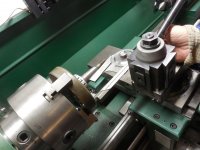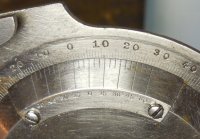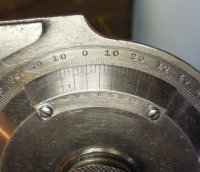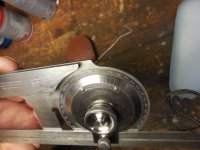I screwed-up earlier.
The 3:16 taper would be 10°43' included angle, 5°21' tooling angle.
The 3:16 taper would be 10.71° included angle, 5.36° tooling angle.
The 1:5 taper would be 11°25' included angle, 5°43' tooling angle.
The 1:5 taper would be 11.42° included angle, 5.71° tooling angle.
...5 degrees 30-35 minutes. or 5.5 to 5.58 degrees in decimal...
That's somewhere in the middle of the 3:16 and 1:5.
(If I could fit the flywheel on my tiny lathe)
The way I'd try to get the taper would be to,
Use a DTI on the QCTP,
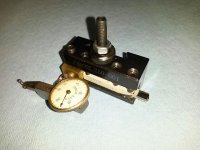
Use a dial carriage stop.
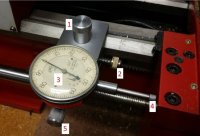
Chuck-up the flywheel, dial-in no runout, no wobble.
At the fat end of the taper,
- Set the dial stop at the carriage, with at least 1.000" compression.
- Zero the DTI and crossfeed at the large diameter.
- Move the carriage right by 1.000".
- Feed-in the crossfeed, until the DTI is zeroed.
The crossfeed dial will show the radial difference between the small and fat end.
(With the carriage travel of 1.000", we avoid complicated math.)
Take that radial value, and get the arctan, which will be the tooling angle.
Double that to get the included angle.
Ex: Crossfeed difference of 0.100",
Arctan of 0.100 = 5.71°,
Double 5.71° = 11.42°.

